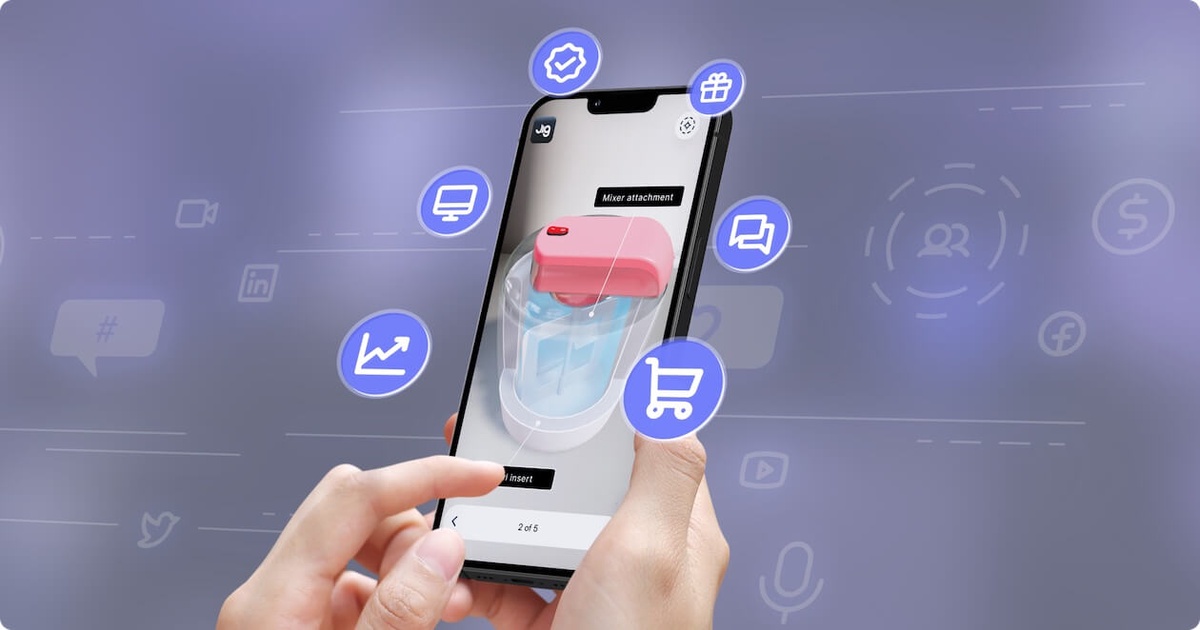We live in a technology-filled world where digital and real-life merge. Augmented Reality (AR) is at the heart of this, turning games, e-commerce, and real estate on their head. It's changing how we use software.
What Does Augmented Reality Mean for Software?
AR is like seeing the digital world layered on our real environment. It uses visuals, sounds, and texts to create a more tangible digital world. In terms of software, AR lets users handle 3D models, look around digital objects, and stand in simulated environments. It feels real! It's not just 2D on a screen anymore. AR blurs the line between real and digital, pulling us users deeper into our software. This new kind of interaction brings a whole different level of user engagement. It changes how we use and understand software.

How Augmented Reality Changes User Experiences
Augmented Reality (AR) adds a new twist to user experiences. It brings a unique level of interaction that eclipses basic software platforms, changing users from observers to active players in the digital sphere.
The extra involvement is AR's signature. You see it when lessons use 3D models to unravel tricky scientific ideas. This does more than spark interest - it boosts understanding and memory. AR also spices up entertainment, giving a depth of experience that sucks players in. Thanks to its realistic spin on digital platforms, AR makes the user experience fulfilling and compels users to come back. It can revolutionize shopping by giving customers a 'try before you buy' option or easing complicated tasks for professionals.
However, it’s key to remember that prudent and centered design is necessary to access these perks.
The Function of Augmented Reality in Coding
Good To Read : Top Software Product Ideas for Startups and Enterprises in 2024
The Influence of Augmented Reality on User Experiences
Augmented Reality gives software coders a universe of opportunities. They can create digital experiences that join the real and the virtual, uncovering a wealth of fresh possibilities. AR's aptitude for smoothing out complex software processes is another plus. For example, it lets users act by merely engaging with virtual elements, avoiding the hassle of sifting through multiple menus and choices.
Creating AR apps requires a special set of skills and tools. These range from 3D modeling know-how to computer vision understanding, and from spatial computing mastery. Building an AR software might be tough due to these unique needs. Yet, the result of crafting deeply engaging experiences for users is totally worth it.
In the ever-changing sphere of software development, AR adds a new swirl of fresh ideas and chances. It lets developers to venture past regular user interfaces and bring to life truly captivating and interactive experiences. So, AR could potentially revamp the software development world.
Must Read : Top UI/UX Design Trends and Predictions in 2024
AR's Real-life Uses in Software
Many industries are tapping into the promise of AR, making our software experiences uniquely different. Consider the world of gaming, which has welcomed AR to boost player involvement. A great example is Pokémon Go: the game blends the digital and the real to give an improved gaming experience. In the realm of education, AR shines by giving life to complicated subjects in a 3D setting. This can make daunting concepts more understandable, aiding students in learning and recalling.
The e-commerce field is also putting AR to good use in enhancing customer engagement. It allows customers to try out products - imagine having a secure trial of clothes or visualizing how their new sofa would fit in their living room, all before they buy.
In the healthcare space, AR is employed for better patient results. Surgeons can use it to superimpose crucial details onto the patient's body during surgeries, adding an important layer of accuracy and safety. These practical uses of AR highlight its game-changing potential for redefining our interaction with software across various sectors.
Augmented Reality's Impact on Future Software
Augmented Reality (AR) keeps growing. Soon, it'll change how we experience software. The outcomes are thrilling. Think of graphics so real, they'll blur the lines between our digital and physical worlds. Plus, advancing tracking systems could make AR tools more natural to use.
AR paired with emerging technologies like Artificial Intelligence (AI) and the Internet of Things (IoT) offers new possibilities. Picture an AR app that not just overlays digital details onto reality, but also learns from you and evolves. Or an IoT gadget using AR to give vibrant feedback, connecting users and their smart surroundings.
AR's role in our everyday lives is about to grow. With the rise of smart glasses and AR devices, we're likely to use more AR software in daily activities. It might change how we do work, learn, and play, making AR a huge part of our lives. Augmented Reality in software is an exciting new boundary that could turn our interaction with the digital world on its head in ways we can’t yet fully understand.
Increase sales & brand loyalty with immersive AR experiences. Contact our Software Development Company and unlock your potential!
Concluding Thoughts
Summing it up, Augmented Reality's blending of the digital and real world is altering software and how we interact with it. With its interactive, immersive layer, AR offers an engagement level exceeding traditional software. Ongoing tech advancements suggest a future where AR will be central to our digital experiences. This shift is exciting for developers, users, and many industries. The AR revolution is in early stages yet holds boundless prospects. We're at the start of a thrilling tech innovation journey, with a bright future just down the road.


No comments yet